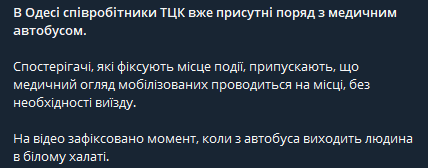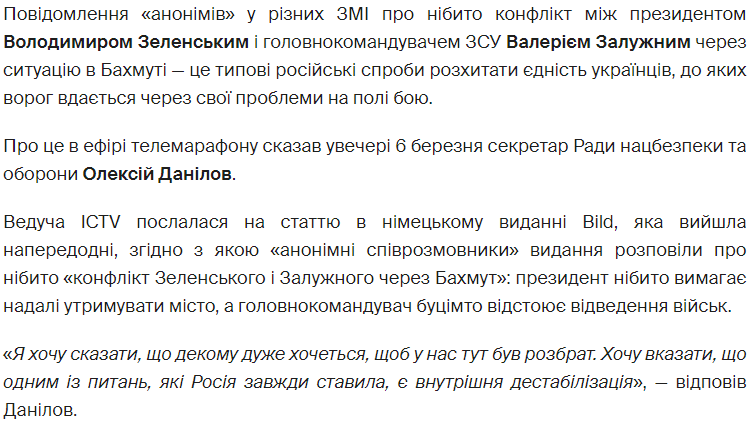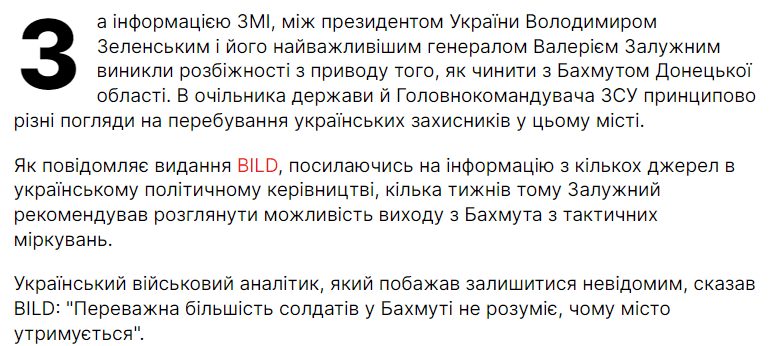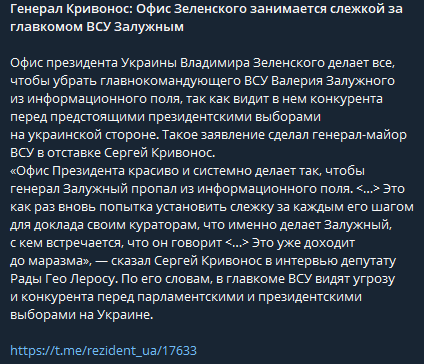The enemy is constantly adapting to the actions of the Ukrainian Defense Forces and modifying its strategic and tactical plans. We will not examine changes in the purely military sphere, but we will show what Russia has changed in the information sphere.
To begin with, it is worth mentioning that in preparing for a full-scale invasion, Russia relied on a new concept of the Chief of the General Staff of the Russian Federation, Valery Gerasimov, unofficially called the “active defense concept.” This was discussed in more detail in the report “The Machine of Russian Expansion: Doctrinal, Information and Foreign Policy Aspects” .
The essence of it is that Russia is gradually seizing physical territories through “small steps” after declaring them a security zone for “old Russia.” This was clearly evident in Putin’s public statements on the eve of February 24, 2022, when Putin claimed that “the flight time to Moscow is 5-7 minutes” and that Russia cannot allow such threats (repeated in the commentary of 30.05.2023). Russia’s information campaign does not proclaim the occupation of a neighboring country, but rather “demilitarization and denazification” and the establishment of a dependent regime like Lukashenka in Belarus.
This concept assumes that there is a significant portion of the population loyal to Russia and a “fifth column” of local politicians who should lead local governments. It is clear that after large-scale missile attacks and the barbaric destruction of infrastructure and entire cities, it is very difficult to hope for the loyalty of a significant part of Ukrainian society. However, a year after it began, Russia adapted this concept to the reality in which the enemies of Ukrainians are supposed to be the government and the Ukrainian Defense Forces. Since about February 2023, the Kremlin has relied on promoting several interconnected narratives simultaneously:
– Russia did not want and does not want a big war. All of its actions are related to the danger posed by the Zelenskyy regime, which has submitted to the United States. In this concept, Russia is fueling the internal political conflict in Ukraine through the message “If Poroshenko had remained President of Ukraine, there would have been no war.”

At the same time, the fact that in 2019 the propaganda narratives were opposite is not articulated.
– Volodymyr Zelenskyy is not going to peace talks and is ready to fight to the “last Ukrainian”. This is facilitated by the need for constant mobilization to replenish reserves, which forms an audience loyal to Russian narratives among potential mobilizers (who want to avoid it).

Channels of communication such as chats about “handing out summonses” and the media that are whipping up hysteria around the mobilization have already been established.
– families of military personnel, and especially the families of the captured and killed, are pumped with narratives about “the government stealing and PR,” “poor provision,” and so on. This is facilitated by really strange events regarding the taxation of volunteer aid or scandals with combatants blowing up volunteer cars. Russia is actively involved in promoting this.

– Commander-in-Chief Valeriy Zaluzhnyi has a conflict with Zelenskyy/Yermak, and therefore he was forced to disappear from the information field. In order to draw attention to this as much as possible, an absolutely idiotic fiction about the “death of Zaluzhnyi” was promoted, which turned out to be a failure because Valeriy Fedorovich was alive and well, but during this time Russia managed to push the thesis that “Zaluzhnyi was banned from appearing in the media.”

– To reinforce the previous narrative, rumors about Zaluzhnyi’s “alliance with Poroshenko” are being spread, and although the facts show the opposite (for example, Mykhailo Zabrodskyi resigns his mandate as an EU member of parliament to work in the General Staff), various “experts” and “political analysts” periodically write about it.
– There are various conspiracy theories surrounding three key people in the Ukrainian Defense Forces: Zaluzhnyi, Budanov, and Syrskyi, various conspiracy theories are being built around them. First, they talk about the confrontation between Budanov and Zaluzhny, then Syrsky and Zaluzhny, then Budanov and Syrsky. There are no objective prerequisites for this, but rumors are constantly spreading. Recently, the head of the SBU, Malyuk, has been included in this circle.


– For absolutely all key figures in the Ukrainian Defense Forces, messages are sent about their dependence on the West and at the same time that the West strongly condemns their actions. Of course, it is Budanov who gets the most of it. Budanov, because his position involves operations in enemy territory, which is a constant and understandable fear of Western capitals.


In general, if we analyze the totality of the above narratives, they should serve to form a cluster of Ukrainian citizens loyal to Russia, despite all the horrors of the war, and prepare the ground for the possible failure of the Ukrainian Defense Forces during a counteroffensive. At the same time, Russia’s military actions are aimed primarily at delaying the Ukrainian offensive (or increasing its cost) and at simultaneously forming a critical mass of protest sentiment in Ukrainian society. Conditionally, to launch a destructive scenario inside Ukraine that will prevent the implementation of strategic military plans for the liberation of Ukrainian territories.
The Russians’ calculation is clear: high expectations from the Ukrainian counteroffensive and trust in the President and the Armed Forces must give way to despair and distrust, mass protests in the rear, and conflict between the military at the front and those who do not want to fight. An internal political confrontation that should move from television screens and social media posts to a military phase, so that Russian troops can eventually enter and act as a “stabilizing factor.” This should be supported by the West.
After that, steps are obviously going to be taken toward the “rebellious” Asian countries, the Caucasus, Moldova, and the Baltic states. The ground has already been prepared everywhere, and the main problem is whether this scenario can be implemented in Ukraine. And here it is important that the main actors of the information front in Ukraine understand this scenario and do not broadcast Russian narratives, no matter how attractive they may be for short-term political or other benefits when used. It is very easy to spread the theory that Oleksandr Syrsky wants to take Valeriy Zaluzhnyi’s place, or that Volodymyr Zelenskyi wants to remove Budanov/Zaluzhnyi because of their popularity, but for some reason this all coincides with publications on Russian TV channels and is often spread by Ukrainian opinion leaders. As well as criticism that goes far beyond constructive: “Budanov is promoting a stranger,” “Syrskyi killed soldiers in Bakhmut for the sake of his political career,” “Zaluzhnyi wants to become president,” “Budanov is not good at managing intelligence and should go to the Armed Forces,” “Syrskyi is a Russian agent,” and so on.
Today, information warfare is an important factor in the overall confrontation, and we cannot allow Gerasimov’s “concept of active defense” to work because of our negligence.


Leave a Reply